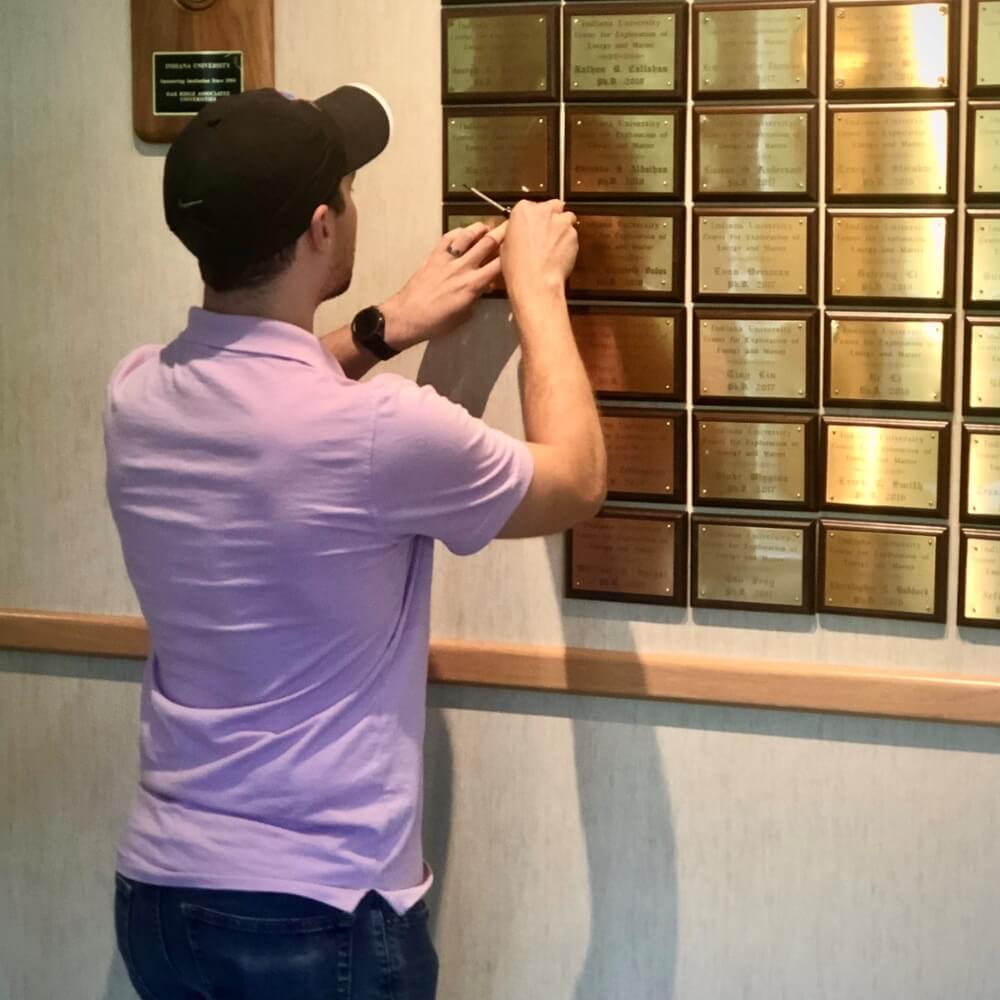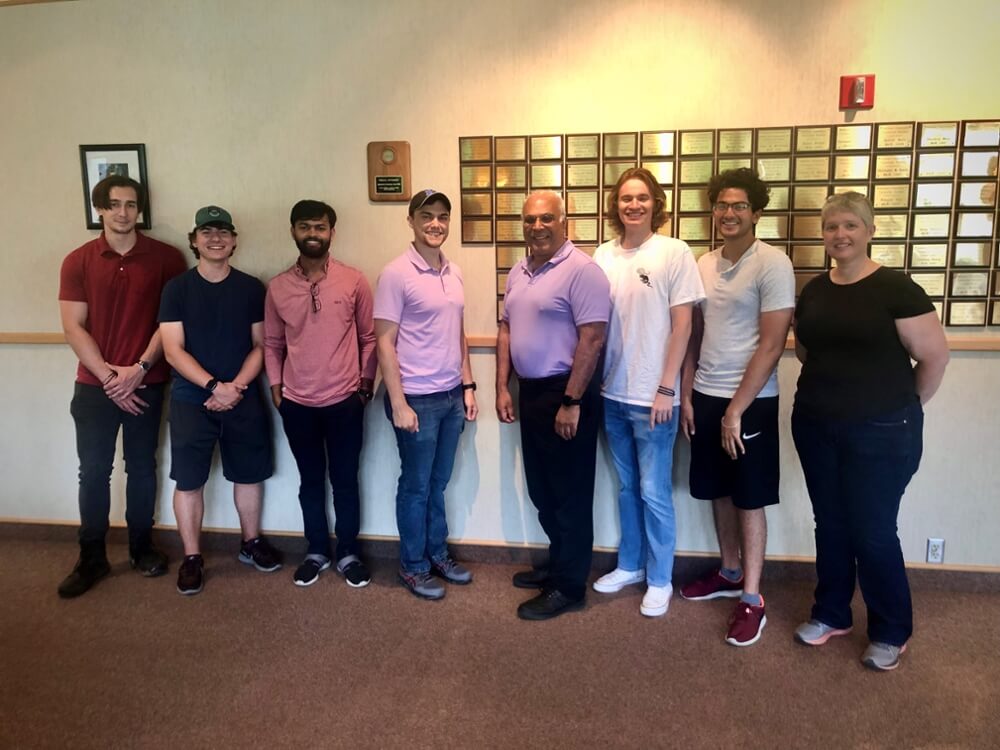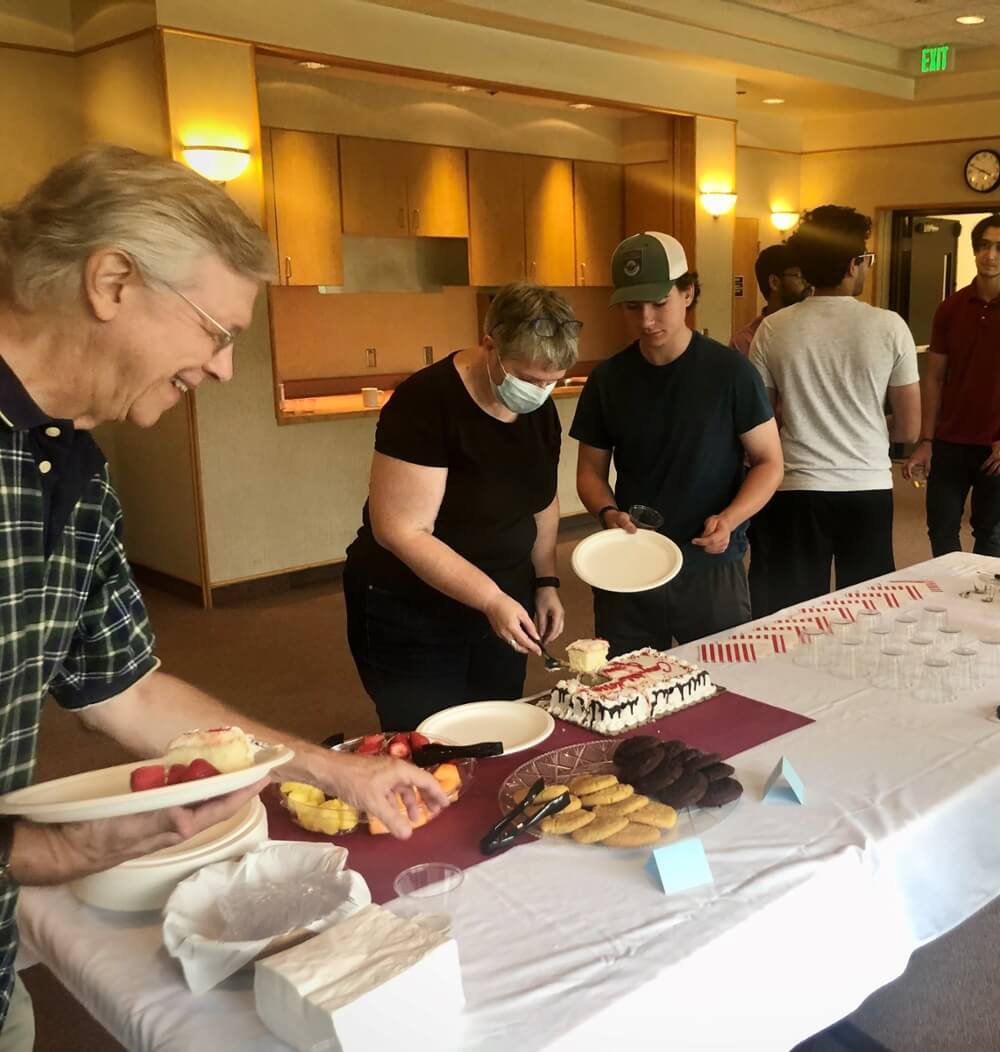Our celebration of Dr. James Edgar Johnstone's successful doctoral dissertation defense, with his committee chair Dr. Romualdo deSouza and supervisor Dr. Sylvie Hudan.
Dissertation Title: The Influence of Shell Structure on Near-Barrier Fusion of Neutron-Rich Nuclei
Abstract: Understanding neutron-rich nuclear material is a topic at the forefront of physics research and has far-reaching implications for many areas of nuclear science including nuclear astrophysics, heavy-element nucleosynthesis, and the nuclear equation-of-state. Fusion studies are a unique tool for gaining access to an understanding of the nucleus far from stability. Systematic fusion measurements along isotopic chains have provided insight into how nuclear structure and dynamics change with increasing neutron number. Building on previous studies, the near-barrier fusion cross-sections for 36;44Ar,41;45K+16O,28Si were measured using an energy vs time-of-flight approach. The measurements were conducted at Michigan State University's National Superconducting Cyclotron Laboratory using the ReA3 facility. The measurements explored the behavior of fusion for both closed neutron-shell nuclei as well as open neutron-shell nuclei. The measured fusion excitation functions were compared to theoretical models showing the importance of both accurate density distributions and dynamics in fusion.
As part of this experimental effort, high-quality 28Si targets with reduced oxygen content were also produced. Fabrication of these isotopically enriched, self-supporting targets is detailed. These thin foils were characterized using a quartz crystal monitor, X-ray photoelectron spectroscopy, and Rutherford back-scattering. In preparation for future experiments near the neutron dripline, a new detector for measuring fusion was developed. The detector, MuSIC@Indiana, was designed and constructed with several unique features which allow for accurate and efficient measurement of the fusion excitation function at low beam intensities. MuSIC@Indiana was commissioned by the measurement of the 18O+12C fusion excitation function at the University of Notre Dame's Nuclear Science Laboratory's 10 MV Tandem Accelerator. An advanced data analysis technique, which improved upon the resolution presently achievable with MuSIC-type detectors, was successfully demonstrated with this dataset. This new analytic technique substantially enhances the impact of MuSIC-type measurements of fusion.






